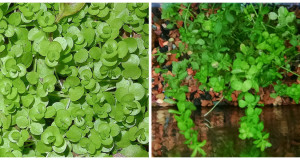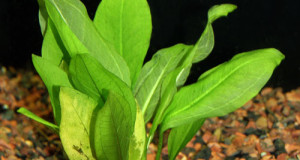Essential Nutrients for the Planted Aquarium
 Brandon here. Anyone who gardens or keeps houseplants knows that plants need a boost once in awhile to look their best and maintain lush, consistant, healthy growth. Aquarium plants are no exception, but it may be difficult to decide which supplement to use. Here is an overview of some of the components you may see in the supplements, and what they do to help you along in your aquatic gardening.
Brandon here. Anyone who gardens or keeps houseplants knows that plants need a boost once in awhile to look their best and maintain lush, consistant, healthy growth. Aquarium plants are no exception, but it may be difficult to decide which supplement to use. Here is an overview of some of the components you may see in the supplements, and what they do to help you along in your aquatic gardening.
*In order of highest to lowest required concentration
Macronutrients
- Nitrogen: Used for formation of amino acids, protein, DNA, and various other functions such as osmoregulation and nutrient uptake. Deficiencies result in stunted growth and cell death.
- Potassium: Important in breaking down carbohydrates for protein production.
- Used in production of seeds and fruits.
- Important for overall plant growth.
- Generally not harmful if overdosed
- Calcium: Used as a signaling mechanism for environmental stress.
- Excess calcium interferes with phosphorous and can lead to health problems.
- Magnesium: The central molecule in chlorophyll. Also used for enzyme activation.
- Phosphorous: Used in DNA and RNA to hold base pairs. Also found in Adenosine Triphosphate (ATP) and ADP, which is used for energy storage and transport. Nitrogen and phosphorous are the two most important elements found in plants.
- Deficiencies result in stunted growth and cell death.
- Sulfur: Used to create certain amino acids.
- Deficiencies usually indicated by decreased or stunted growth and yellowing of entire plant. Low levels of sulfur are required for plants health.
Micronutrients
- Chlorine: Used for chemical signals between cells. Also used in opening and closing of stomatal guard cells (important in terrestrial plants).
- Iron: Used as an electron acceptor and donator in photosynthesis. Also used in the creation of new chlorophyll molecules.
- Iron deficiencies are indicated by yellowing leaves. The plant cannot function without iron and the processes it is involved in, and can die from stress.
- An excess of iron can result in a build-up of free radicals within the plants tissues, which damages cells and DNA and can also lead to plant death. In the aquarium an excess of iron can be readily absorbed by algae which can result in algae blooms.
- Boron: Enzyme activator used for making starch, which is used in the production of cellulose.
- Used for sugar transport to meristems (the parts of the plants where new growth forms).
- Manganese: Enzyme activator. Needed for the production of chlorophyll.
- Zinc: Enzyme activator. Required for leaf formation.
- Deficiencies result in what is called “little leaf” syndrome.
- An excess of zinc interferes with metabolic function and may result in plant death.
- Copper: Enzyme activator.
- Inhibits shoot and root growth when overdosed. Also interferes with electron transport during plant metabolism. Can result in plant death.
- Molybdenum: Important in the reduction of nitrates, which provides nitrogen for the creation of proteins.
- Nickel: Enzyme activator. Used in breaking down urea.
- Inhibits shoot and root growth when overdosed. Can result in plant death.
Other non-mineral elements required for plant growth:
- Carbon: usually acquired from carbon dioxide through photosynthesis. Found in sugars, carbohydrates, starch, and every part of the plant.
- Oxygen: acquired through photosynthesis, respiration, and from water. Also found in sugars, carbohydrates, starch, and every cell of the plant.
- Hydrogen: acquired through photosynthesis, respiration, and water. Again, essential compound in the makeup of sugar, starch, carbohydrates, and cellular structures.
Carbon, hydrogen, and oxygen are the most prominent elements found in plants (found in the highest concentrations). Because they are readily available from the aquarium water they do not need to be supplemented (with the exception of carbon which can be added to the aquarium with a CO2 reactor).
Hopefuly this helps clear up some of the confusion with planted tank supplementation.
Brandon
 That Fish Blog – Aquarium Advice and Information
That Fish Blog – Aquarium Advice and Information



I am having a perplexing problem in our tank. The plants (mostly sword or grass types) that are planted eventually have a problem and they die a slow death. The leaves almost seem to become “translucent” or water logged, start to die off then become mushy and then start to disintegrate. They usually start on the outside leaves and work it’s way inward. When cleaning the tank, we find a lot of algae of the plants and try to wipe it off, but we also find the bottom of the plants slimy, especially when the above mentioned problem starts. We have a 10 gallon freshwater tank with 7 active fish. Could it be too much light or not enough light? Need for nutrition/plant food? Or perhaps a water condition issue? We do not use a heater sine we are in nor cal and it remains pretty moderate. Any help would be appreciated as these plants we keep buying are not cheap! Thanks!
Do you know the species of the plants you are having trouble with? You may have plants that are not true aquatics, and they will not tolerate being submerged for long periods of time. May also be a nutrient or substrate issue, but it will help to know what you are trying to grow.
I totally agree with this article. Just like humans, tropical aquarium plants living in our own tanks need all the essential nutrients and minerals for them to live and survive healthily. All these elements must be provided accordingly.